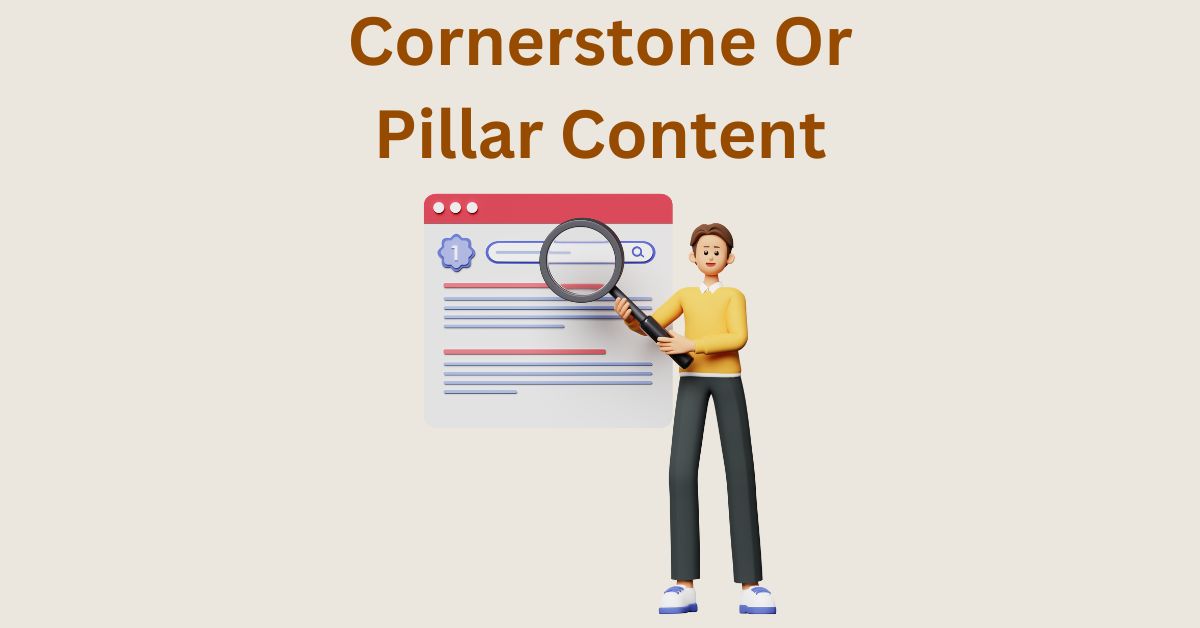How to Write Cornerstone Content in SEO- Meaning, Strategies, Tips and Importance
Estimated reading time: 5 minutes
Last updated on March 26th, 2024 at 07:10 am
Do you want to know “How to Create Cornerstone or Pillar Content”?
Think of your website like a big building. Now, imagine the most important part of that building – the cornerstone.
That cornerstone holds everything together and makes the whole structure strong.
Similarly, creating cornerstone or pillar content is like having a super important and central piece on your website.
Well, here’s a fact: Websites that have strong cornerstone content get 2.5 times more visits than those without it.
It’s like having a magnet that attracts visitors to your site because they find something really valuable there.
10 Steps to Create Cornerstone Content or Pillar Content
1. Who Are You Writing For and What Do You Want to Achieve?
Imagine you’re throwing a party.
You’d plan it differently if it’s for friends or business associates, right?
Similarly, before creating your cornerstone content (super important content on your website), know who you’re talking to and what you want them to take away.
It’s like setting the vibe for your online gathering.
2. Finding the Right Topics Using Keywords
Think of keywords as secret codes people use to find what they want online.
When you use the right ones, it’s like having a treasure map that leads visitors straight to your content.
Did you know that 93% of online experiences start with a search engine?
So, using the right keywords helps your content get discovered by people looking for exactly what you offer.
3. Picking Timeless and Relevant Ideas
Imagine creating content that never gets old, like a classic movie people still love after years.
When you pick timeless and relevant ideas, your cornerstone content stays valuable for a long time.
In fact, 76% of marketers say evergreen content (content that doesn’t lose its relevance) is their most successful strategy.
It’s like planting a tree that keeps bearing fruit season after season.
4. Creating a Catchy and Clear Title
Imagine you’re in a bookstore, and a book title grabs your attention.
That’s what a catchy and clear title does for your content.
It’s like the cover of your online book that makes people want to click and read.
Studies show that headlines with numbers and specific promises get 36% more clicks.
So, when you’re creating your title, make it irresistible!
5. Organizing Your Content for Easy Reading
Think of your content like a well-organized party.
You wouldn’t want your guests wandering around aimlessly, right?
Similarly, organize your content so visitors can easily follow along.
Break it into sections, use headings, and keep paragraphs short.
Did you know that 43% of people admit to skimming blog posts?
So, when your content is easy to read, it keeps visitors engaged.
6. Adding Pictures and Graphics for Interest
Imagine reading a book without any pictures. Boring, right?
Well, the same goes for online content.
When you add pictures and graphics, it’s like adding colour to your words.
Studies show that articles with images get 94% more views.
So, make your content visually appealing.
It’s like turning your online space into an interesting and inviting gallery for your visitors.
7. Writing Content That People Want to Share
Think of your content as a good story you can’t wait to tell your friends.
When you create content that people want to share, it’s like telling a story so interesting that others want to spread the word.
Did you know that 68% of people will share content if it’s informative and valuable?
So, focus on creating content that others find share-worthy.
8. Using Links the Right Way
Imagine your content is a web of information, and links are the threads holding it together.
When you use links the right way, it’s like creating a well-connected network that helps both visitors and search engines navigate your content.
In fact, Google considers the number and quality of links when ranking pages.
So, strategically use links to enhance your content’s credibility and accessibility.
9. Making Sure Search Engines Notice: Metadata and Keywords
Think of metadata and keywords as the backstage crew of a play.
They may not be in the spotlight, but they play a crucial role.
When you use the right metadata and keywords, it’s like giving search engines the cues they need to understand and showcase your content.
About 75% of users never scroll past the first page of search results, so making sure search engines notice your content is key.
10. Getting the Word Out and Keeping Content Up to Date
Imagine you’ve hosted a fantastic event, but people need to know about it.
Getting the word out about your content is like inviting people to the party.
Also, just like you wouldn’t want outdated info at your event, you don’t want stale content on your website.
Google loves fresh content, and websites that update their content regularly get 2.2 times more traffic.
So, spread the word and keep your content up to date for a thriving online presence.
Wrapping Up – How to Create Cornerstone or Pillar Content
Creating cornerstone or pillar content is like building a strong foundation for your online presence.
It’s about making really good, comprehensive content that covers the main topics in your area of interest.
When you do this, you not only help people by giving them valuable information, but you also become an expert in your field.
To make great cornerstone content, you need to do thorough research, plan carefully, and focus on providing information that stays relevant over time.
This content becomes the core of your digital strategy, bringing in more visitors, boosting your website’s visibility on search engines, and keeping people interested for the long run.
